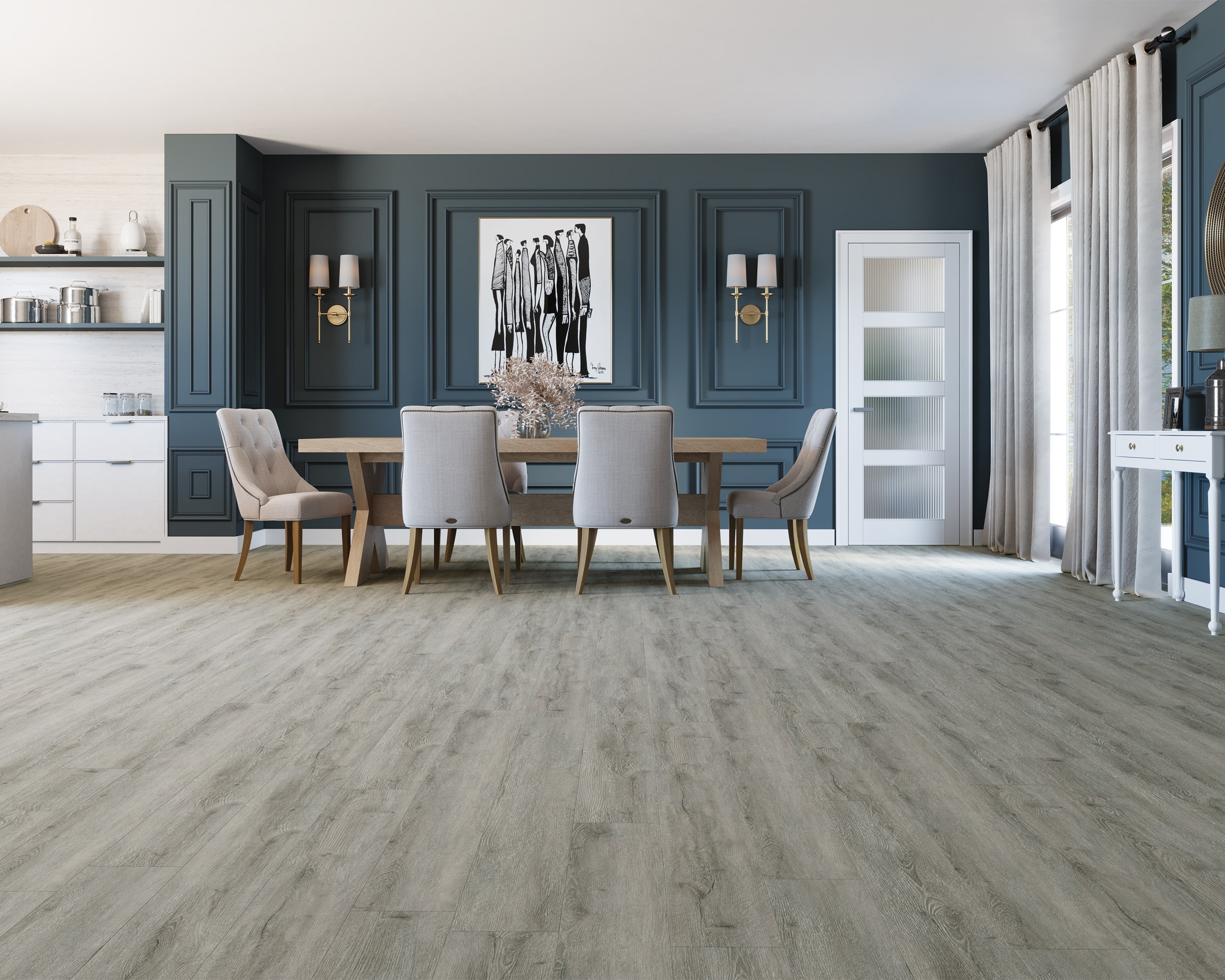When they enter a room, people almost always notice the flooring – whether it’s colour, texture or composition, we tend to take note of what we’re walking on. Flooring can bring a theme together, add warmth, and provide a comfortable surface to step on.
Flooring expert Jeff Morrison is Vice President – Lumber & Building Materials (LBM) for Goodfellow Inc., a coast-to-coast Canadian distributor of hard surface flooring, including hardwood, vinyl, laminate and, most recently, ceramic.
He said vinyl remains the highest volume product among consumers, likely thanks to its affordability and livability. With a waterproof membrane, vinyl is a lot more resilient than other flooring options. Homeowners are attracted to the ease of installation and low maintenance of vinyl, with Morrison noting that, “kids coming in with snowy boots in the wintertime are not going to hurt the floor.”
Over time, he said, “the resolution of the décor paper has become so realistic-looking that you get a low cost, low maintenance floor that looks real – and that basically drove the vinyl market.”
Loose lay, dry back, and glue down vinyl tiles are regaining momentum, Morrison observed. He has also noted that wood plastic composite (WPC) core vinyl tiles are increasingly in demand. He feels this is because stone plastic composite (SPC) is more rigid and less pliable over uneven surfaces. “SPC is a great product, but we have noticed if there is a lot of deflection in the sub-floor, the SPC can pull apart.”
The demand for hardwood flooring is holding steady. “Wire brushed, wide plank oak is still the most popular,” Morrison said. On the consumer side, engineered hardwood flooring is outselling solid, although builders still install a lot of solid hardwood flooring, he added.
In Western Canada, especially on the Prairies, laminate has seen a bit of a resurgence. Morrison feels the drier climate reduces expansion and contraction issues and pointed out that many consumers see laminate as a tried, tested and true product. Advancements in laminate construction have helped to further its longevity in the market.
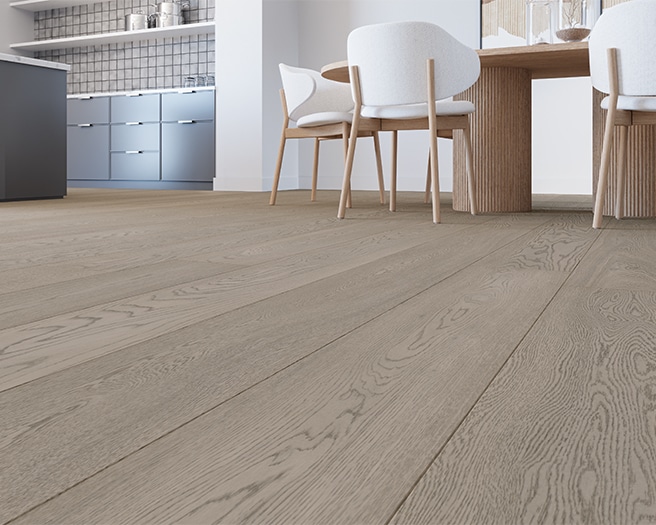
Photo courtesy of Goodfellow Inc.
“The laminate industry came back with some waterproof qualities added to their core, where they could compete with vinyl,” he said, adding that it is still a good market for laminate, especially in the home renovation category.
“A lot of contractors and homeowners still want 12 mm thick laminate, especially when they want to match it up to surrounding floor coverings.” He explained that installers prefer to install laminate over having to build up the subfloor or incorporate a reducer to match the thickness of ceramic.
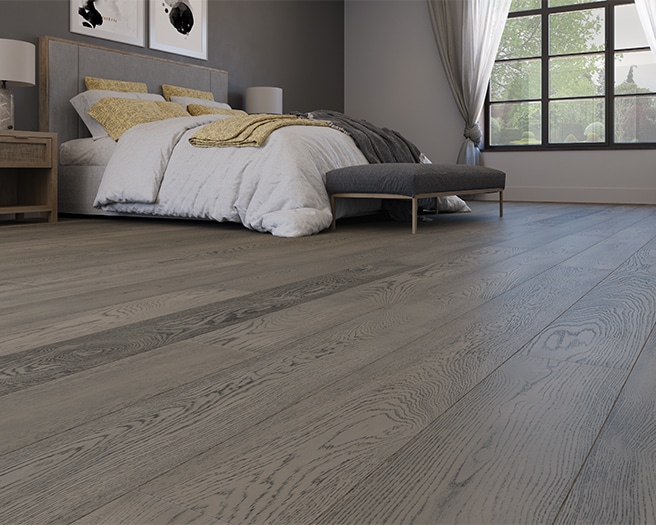
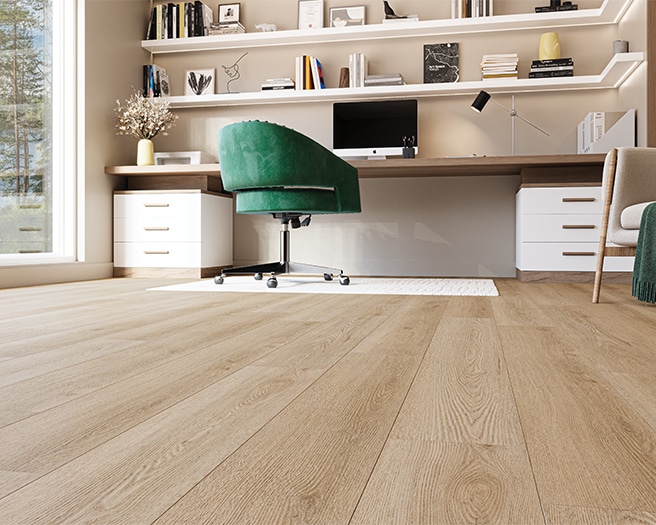
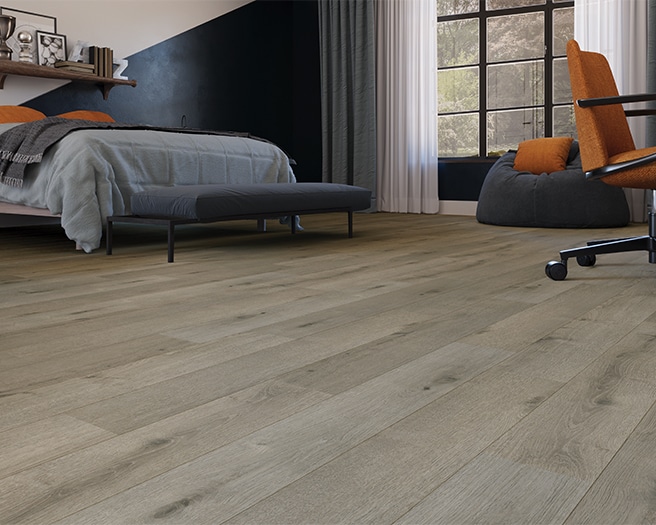
Photos courtesy of Goodfellow Inc.
Ceramic flooring is a new category for Goodfellow. Morrison said ceramics is all about having the right products, with the desired colours and sizes. Larger tile sizes are trending, and while other flooring may be moving away from grey tones, a darker slate-look ceramic tile is popular for Goodfellow, said Morrison. “I find tile is a market on its own, and it doesn’t always follow the trends of other floor coverings.”
The general flooring market is a little slower than normal, Morrison feels, which he relates to the boom in sales during the pandemic years and lower than average new home starts. The main progression, he noted, has to do with colour.
“People are not moving back to a narrow hardwood plank, for instance; it has just been an evolution of colour.”
As colour preferences evolve, lighter grey floors are giving way to darker tones, especially in the “greige” category, with Morrison adding that warmer tones are likely the future of flooring.
“Lighter colours are still there, but we are seeing more demand for the browns and slightly darker colours, although I don’t think we will see a resurgence of the really dark options.”
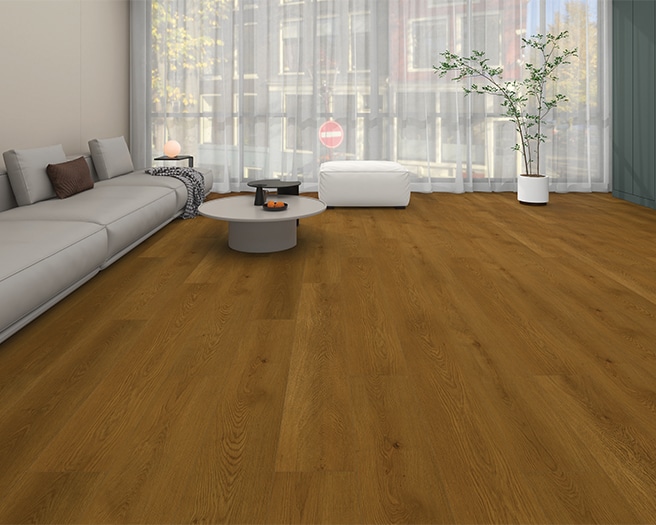
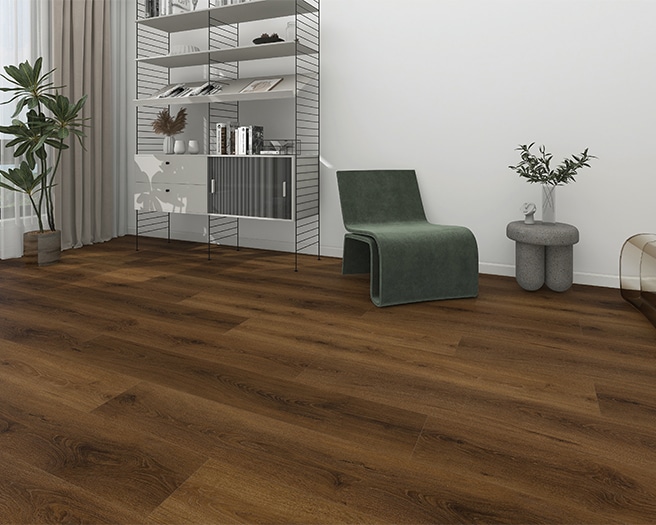
Photos courtesy of Taiga Building Products
Taiga Building Products, a Canadian flooring and building materials supplier for more than 50 years, has clocked a regional trend when it comes to flooring preferences.
“Canada is a big country and different provinces are strong with different products,” said Rene Laprise, Taiga’s Flooring Director. “Western Canada wants to work with SPC, but they want 5 mm or thicker products. In Eastern Canada, people still love laminate.”
Laprise feels that advances in laminate flooring construction have helped to retain its popularity. The more water resistant the laminate, the more expensive it is – with available water resistance ratings ranging from 24 hours to 500 hours.
“If you want to be successful in laminate now, you definitely must offer water resistant laminate,” he said. “People are looking for a water-resistant product.”
No matter which you choose, flooring has limits when it comes to water exposure, warned Laprise. “Water resistant and waterproof is good, but if you install flooring in your home and you have a flood, you will still need to replace the product due to mould, etc.”
Laminate is known for being a very dependable product that resists scratches better than vinyl, making it a good choice for people with pets.
“People know laminate. It has existed for years with few issues,” said Laprise, noting that some SPC vinyl locking systems have had issues in the past.
“After some months you could see spaces in between the planks. Now, some people don’t want to buy SPC because of that.”
To address some of these locking system issues, Laprise announced that Taiga will be offering a new vinyl flooring product.
“There is a new product development coming in the field called ABA solid polymer core (ABA SPC) flooring – a mix of SPC with a layer of foam SPC, which will be launching in August. I think that will be the next generation of SPC.”
According to Laprise, this new product, called Trio EPC, is 30 percent lighter, very stable and more flexible.
“We will promote it as a good replacement product that is still water resistant. [It has] an 8 mm total thickness and is being launched with a 5G drop-lock system on it to keep it a high-end product.”
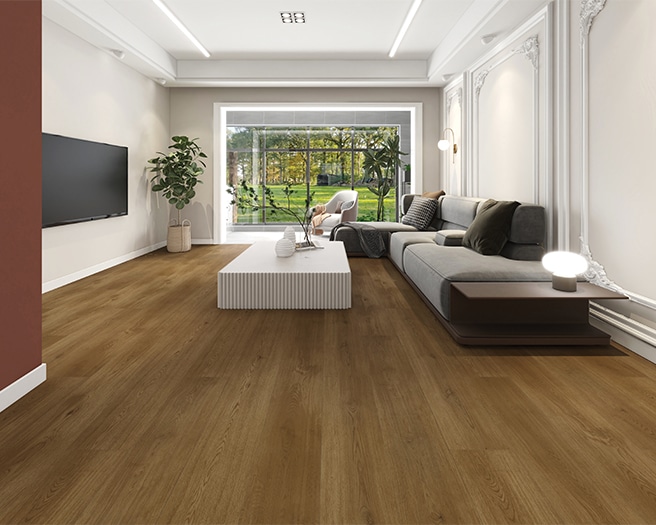
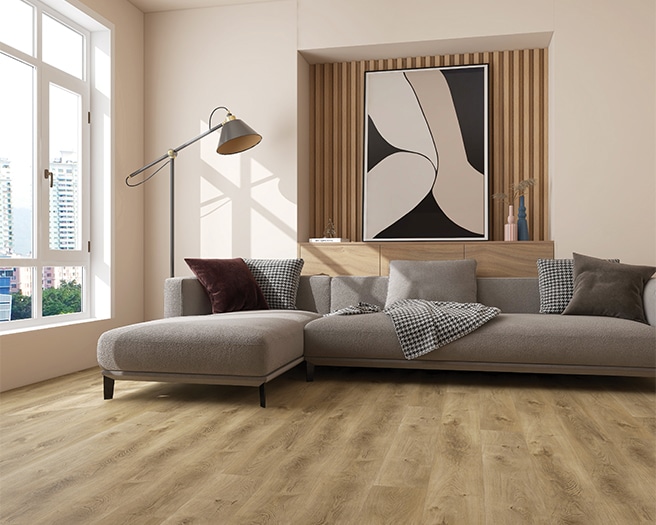
Photos courtesy of Taiga Building Products
A super matte finish and anti-microbial coating, coupled with the weight of the box being less for the end user, should appeal to consumers.
When speaking about colour trends in the flooring market, Laprise said grey is fading out slowly.
“Grey is still good in the Atlantic region, but it phased out in Western Canada a year and a half ago,” he explained. “There is still some demand in the West for grey, but it’s very small. We changed to natural tones, with beige and natural tones now being the most popular colours. I think a Scandinavian feel, with a natural look, will continue in 2025 and probably 2026.”
While Laprise said it’s hard to predict the next trend, he believes lighter and medium toned flooring will be prominent, while dark flooring falls from popularity.
Ultimately, Laprise feels flooring trends follow kitchen design: “I think that’s the trend leader, the kitchen.”
Moving forward, he noted that medium browns have become a bit more popular recently – perhaps signalling a move back to a traditional wood flooring look.
“I think the flooring market will be strong over the next few years,” concluded Laprise. “Taiga has definitely invested to develop the flooring market in Canada.”
In some ways, old is becoming new again, as the flooring market heads towards natural looking, wider planks that may conjure up images of light-filled Scandinavian ski chalets. The warmth of medium browns with a more traditional feel are replacing the greys that have dominated in residential design over the last few years. Our experts suggest this trend will continue into 2026.—
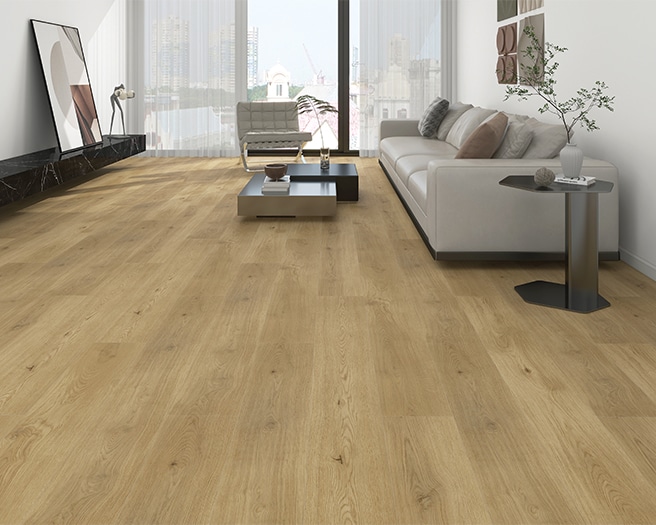
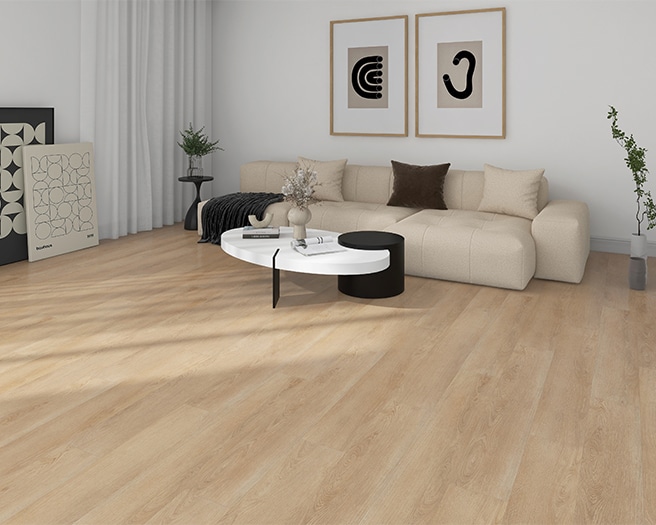
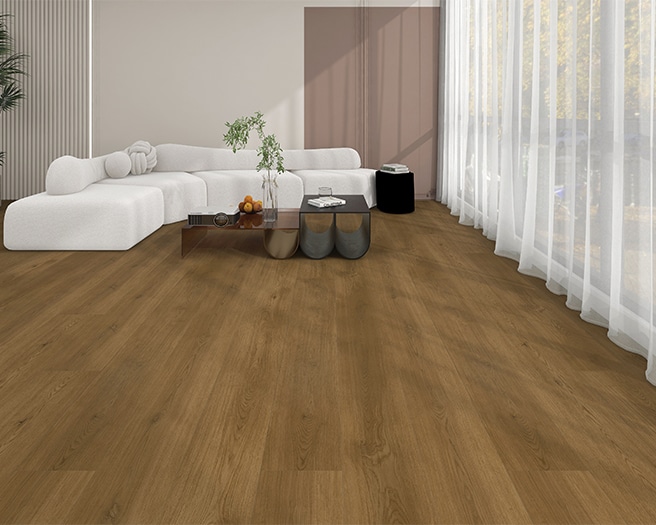
Photos courtesy of Taiga Building Products
